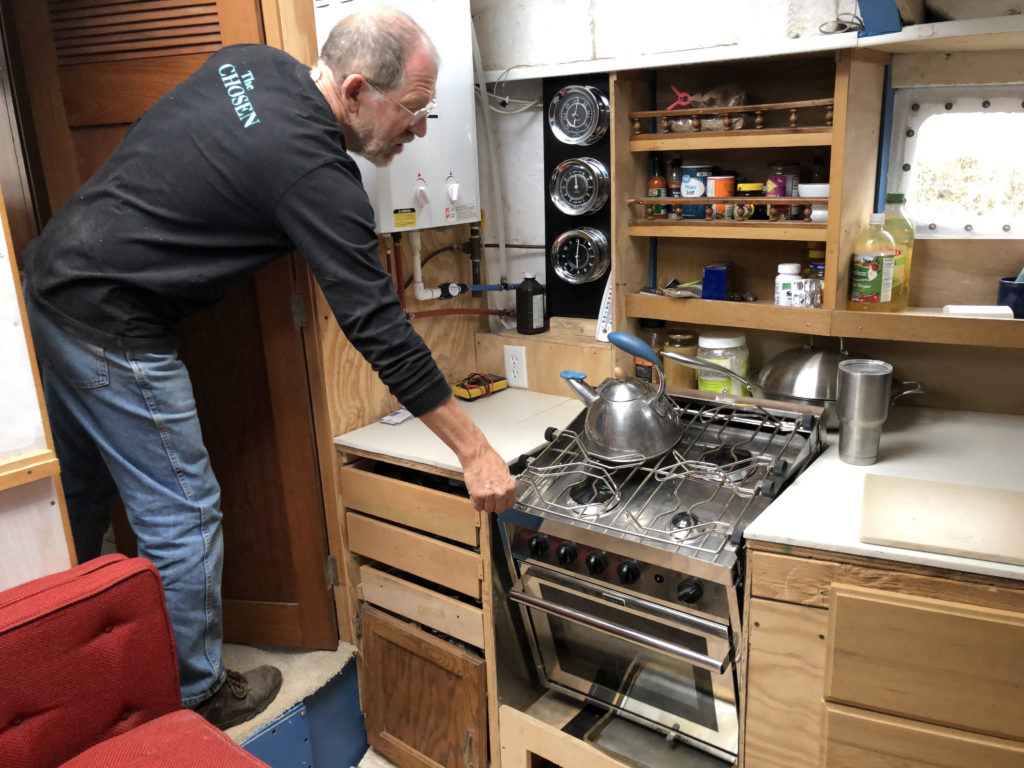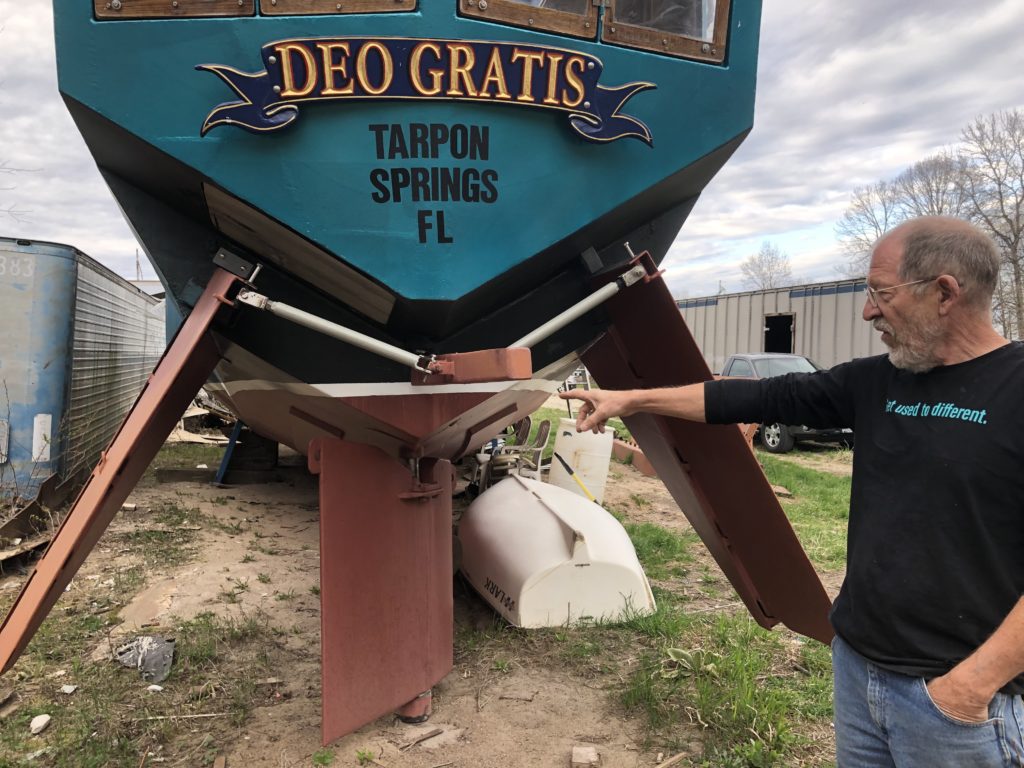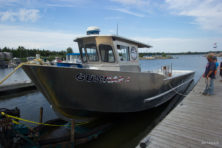Paul and PJ Billing are about to launch their unusual, steel sailing vessel
- Share
- Tweet
- Pin
- Share

A retired ship-construction inspector from Sturgeon Bay is getting ready to put his unusual, 70-foot-long dream boat back into the water for the first time in three decades.
Paul Billing built a model of a Chinese junk as a child, and then partly from that vision, he fabricated and outfitted his sailing and motorized vessel, Deo Gratis, during the 1980s. He started his project in 1984 when he bought 15 tons of steel. Then he sailed the boat and lived on it – sometimes in Florida while working for Marathon Oil, and later while working as a cargo inspector. He shipped it north when he landed a job in 1989 for the American Bureau of Shipping around the Midwest and Great Lakes, and he kept it in Indiana until 17 years ago.
While Paul was inspecting every weld and rivet on vessels at shipyards and factories, he and his wife, PJ, also operated a Sturgeon Bay bed-and-breakfast, the Pembrooke Inn. In some of his free time, he’d tinker on the Deo Gratis. After he and PJ sold the Pembrooke in 2020, he dedicated most of his time and resources to getting the boat ready to sail again by the end of the month.
“Rejoice with us after 48 years of getting to this day. Join with us as we give a heartfelt Deo Gratis, Latin for “thanks to God,” PJ told friends in the Sturgeon Bay Historical Society Facebook group June 20.
On June 23, Paul finally got the boat moving again after paying for a crane, truck and flatbed semitrailer to move it from the yard at Mueller Truck Repair, along Shiloh Road in Sturgeon Bay, down Neenah Avenue, to Bay Marine. There, he planned to attach a heavy ballast to the bottom of a steel keel.

After he completes some finishing touches while the craft is moored at a free anchorage, Paul and PJ plan to navigate the Great Lakes, Erie Canal and Hudson River to the Atlantic Ocean. They then plan to moor the boat along the east coast of Florida, and from there, use it for charitable and disaster-relief causes.
The boat is painted teal, a color associated with scleroderma, the incurable condition that PJ has been battling for 15 years.
“The ship is painted this color so that long after she’s gone,” Paul said of PJ, “people will be reminded that there needs to be a cure found for this incurable disease.”
The Billings’ boat is by no means a luxury vessel, but it has some extra comforts. Those include remarkably high ceilings; relatively spacious sleeping quarters; his and hers workshop areas; a kitchen with homemade, all-wood cabinets; and a homemade, wood-clad refrigerator. Paul also has a homemade hot tub on deck if anyone feels cold after a dive.
With the boat on blocks in the truck yard in Sturgeon Bay, Paul fabricated the “lifting keel” from steel. It fits into a large, watertight slot that passes from the deck to the bottom of the hull. With the keel lifted, the boat draws just four and a half feet of water.
“The boat’s designed to take 12 volunteers or 12 tons of cargo, ideally for Christian missionary work,” said Paul, who currently has no affiliation with a local church. “I can store 1,000 gallons of fuel and 1,000 gallons of water in the front. We can stop at harbors and resupply.” He has done some disaster-relief and volunteer work in Honduras and Haiti, and some of those experiences helped him to envision features that his boat needs for days at sea and off the grid.
It’s equipped with a Detroit Diesel 371 engine, hydraulic steering, two fuel tanks, a hot-water tank and water purifier, pumps for fresh water and drinking water, and a composting toilet. He added solar panels and a drinking-water-collection system. He also bought hundreds of feet of steel piping for the freshwater, and PVC pipe for gray water and sewage storage. He will be able to raise the masts and sails after entering the ocean. For rough seas, his gimballed oven and stove tilt to stay level with the tipping of the boat. He also has a gimballed compass, plus a very accurate, 80-year-old barometer.

The main thing the Billings’ boat still needs is a global positioning system because Paul built its navigation system 40 years ago.
“It was a satellite system, and most of the satellites it communicated with are all down now,” he said.
To sum up the appearance of his steel junk, it’s “form over function,” Paul said. “It’s definitely a working man’s boat.”
He comes from a family with a sailing history, but he’s the only one who has a professional maritime background. Growing up near London, he and his parents frequently sailed across the English Channel.
Paul’s parents decided, when they were 55, that they could live on their boat and see the world for about $6,000 a year. They had some great experiences while sailing, but also tough times at sea. Once, they were even taken hostage at the mouth of the Red Sea and held for three months in Yemen after Yemen declared war on Eritrea. Paul’s mother, Shirley, wrote three books about their 25 years of adventures on the oceans.
Paul didn’t travel with his parents when they were older. By then he had been working in Louisiana for Marathon Oil. He became a Christian there, and his agnostic parents traveled to see him because they were worried about him, he said. Later they became Christians, too.
“We plan to get to Florida, and find a base there, and hope to find churches there interested in helping people, and we can use the ship to carry building materials to charity-project sites to do volunteer work,” Paul said.


